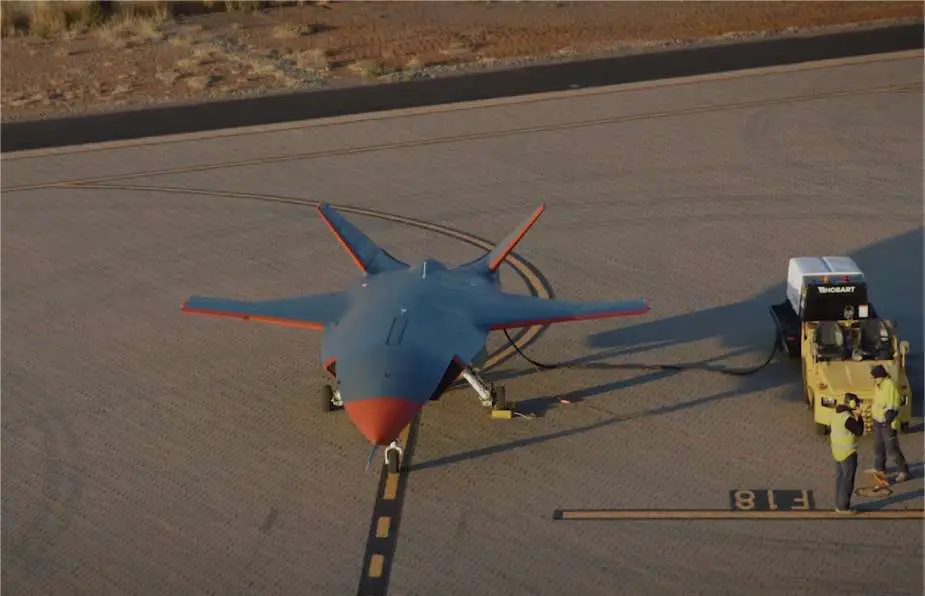On 17 April 2024, The Australian government announced a major increase in defense spending. Over the next ten years, the country will allocate an additional AU$ 32 billion towards modernizing and developing its military capabilities, focusing on missiles, drones, and warships, reflecting concerns about potential conflicts in the Pacific, particularly between China and the United States.
Follow Army Recognition on Google News at this link

The MQ-28 Ghost Bat is an uncrewed teaming aircraft designed by Boeing Australia, supported by the Royal Australian Air Force and a local industry team (Picture source: Boeing Australia)
Defense Minister Richard Marles announced on Wednesday that this increase is part of a broader AU$330 billion defense budget over ten years. The substantial funding increase will be implemented gradually over five years, boosting Australia's defense spending from just over 2% of its GDP today to 2.4% by 2034.
Mr. Marles highlighted a break from post-Cold War optimistic defense strategies, citing the growing rivalry between the United States and China as a key factor necessitating a reshaping of military priorities. The government considers long-range missiles crucial for maintaining regional stability amid increasing uncertainties.
The navy is expected to receive the largest portion of the new budget, with AU$ 145 billion allocated to enhancing the surface fleet, advancing the acquisition program of eight AUKUS nuclear submarines in partnership with the United States and the United Kingdom, and other innovative projects such as the Ghost Shark unmanned submarine. This contribution represents over 40% of the new defense expenditures.
Missile-related programs will also receive significant investments, with about AU$ 74 billion, or one-fifth of the budget, dedicated to this area. Following recommendations from a study conducted last year, the Air Force and Army will be equipped with new longer-range missiles. Investments will also be made in missile defense systems and domestic production of guided weapons. Another major project is the acquisition of the F-35 Lightning II combat aircraft, with plans to integrate 72 units to replace the older F/A-18 Hornets. These aircraft will be capable of carrying long-range anti-ship LRSAM missiles and JSM cruise missiles. Boeing Australia's development of the MQ-28A Ghost Bat autonomous drone is also notable.
Australia is also involved in armored vehicle projects, including the purchase of main battle tanks Abrams, with a recent contract signed for 75 new tanks to modernize its ground fleet. In anticipation of increased activity and strategic partnerships, such as training and exercises conducted annually with the American Marines, military bases in northern Australia will undergo modernization work. These facilities are expected to receive up to AU$18 billion to improve their operational readiness.
This complete refocus on naval force and missiles represents Australia's response to the changing defense landscape. These programs are part of a broader strategy to enhance national security in the face of regional challenges, including rising tensions in the Indo-Pacific region.
Defense News April 2024
















